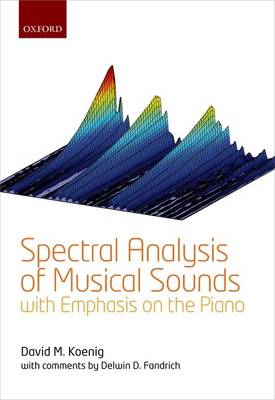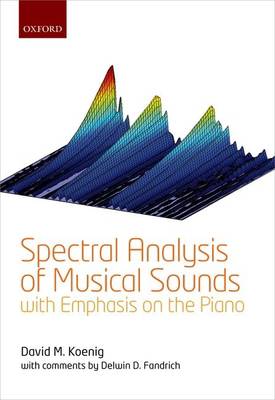
- Retrait gratuit dans votre magasin Club
- 7.000.000 titres dans notre catalogue
- Payer en toute sécurité
- Toujours un magasin près de chez vous
- Retrait gratuit dans votre magasin Club
- 7.000.000 titres dans notre catalogue
- Payer en toute sécurité
- Toujours un magasin près de chez vous
Spectral Analysis of Musical Sounds with Emphasis on the Piano
David M Koenig, Delwin D Fandrich
Livre relié | Anglais
111,95 €
+ 223 points
Description
This book addresses the analysis of musical sounds from the viewpoint of someone at the intersection between physicists, engineers, piano technicians, and musicians. The study is structured into three parts. The reader is introduced to a variety of waves and a variety of ways of presenting, visualizing, and analyzing them in the first part. A tutorial on the tools used throughout the book accompanies this introduction. The mathematics behind the tools is left to the appendices. Part Two provides a graphical survey of the classical areas of acoustics that pertain to musical instruments: vibrating strings, bars, membranes, and plates. Part Three is devoted almost exclusively to the piano. Several two- and three-dimensional graphical tools are introduced to study various characteristics of pianos: individual notes and interactions among them, the missing fundamental, inharmonicity, tuning visualization, the different distribution of harmonic power for the various zones of the piano keyboard, and potential uses for quality control. These techniques are also briefly applied to other musical instruments studied in earlier parts of the book. For physicists and engineers there are appendices to cover the mathematics lurking beneath the numerous graphs and a brief introduction to MatlabRG which was used to generate these graphs. A website accompanying the book (https: //sites.google.com/site/analysisofsoundsandvibrations/) contains:
- Matlab(R) scripts
- mp3 files of sounds
- references to YouTube videos
- and up-to-date results of recent studies
- Matlab(R) scripts
- mp3 files of sounds
- references to YouTube videos
- and up-to-date results of recent studies
Spécifications
Parties prenantes
- Auteur(s) :
- Editeur:
Contenu
- Nombre de pages :
- 400
- Langue:
- Anglais
Caractéristiques
- EAN:
- 9780198722908
- Date de parution :
- 13-01-15
- Format:
- Livre relié
- Format numérique:
- Genaaid
- Dimensions :
- 170 mm x 249 mm
- Poids :
- 907 g







